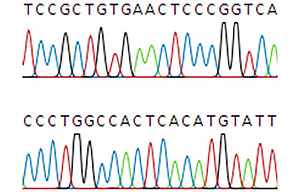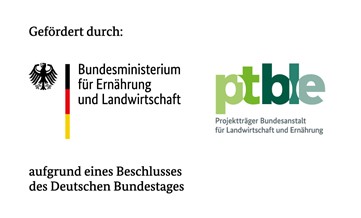Research generates knowledge: Part 1

As a seed breeder for various crops, such as sugar beet or wheat, we are also involved in many research projects with our employees. By working with a wide range of partners, we can pursue our goal of developing innovative technologies in scientific projects. This commitment enables us to gain the latest insights in plant breeding.
In our new blog series "Research creates knowledge", we would like to introduce you to the three most recent research projects that we support and implement with our partners. Look forward to the first part of our blog series:
Research project: DIVHA - Novel Allelic Diversity of the Yield-Determining Trait Stalk Length via Site-Directed Mutagenesis in Wheat
Together with our project partners from the Gemeinschaft zur Förderung von Pflanzeninnovation e. V. (GFPi), Forschungs- and Züchtungsallianz proWeizen, Leibniz-Institut für Pflanzengenetik and the Kulturpflanzenforschung, Gatersleben, Südwestdeutsche Saatzucht GmbH & Co. KG, we were able to successfully implement the project in the period from 2015 to 2020.
In the following, you will get a comprehensive insight into the project topic, the aims, and results:
The targeted induction of mutations using new breeding techniques such as CRISPR/Cas enables both the analysis of the function of genes and the acceleration of breeding progress by creating new genetic variation.
In wheat, the application of new breeding techniques poses a particular challenge. This is because the wheat genome is complex and the technical possibility of nucleic acid transfer as an important tool for the induction of mutations is limited to specific wheat origins. In this project, it was therefore investigated whether targeted mutations can be generated in wheat using a variant of the double haploid (DH) technique through pollination with maize pollen. This experimental approach makes use of the fact that the DH technique of "wide crosses" with maize can be applied to a wide range of wheat origins. By using maize into which the CRISPR/Cas system was previously integrated, the mutagenic components of the CRISPR/Cas system are transferred to wheat through maize pollen, but are degraded already during the first cell divisions after fertilization. Indeed it could be shown, by using stalk length and the underlying genes as an exemplary target, that this way, targeted mutations can be triggered in wheat.
The results are an important step towards targeted mutagenesis in wheat that can be applied to a wide range of wheat origins and does not require the integration of foreign genes into the wheat genome. The method offers great potential, e.g., for the accelerated development of high-yielding and disease-resistant varieties that enable sustainable cultivation while reducing the use of chemical pesticides. In the EU, the application of the method thus far has been strictly regulated, meaning that the possibilities for commercial variety development depend on the future development of the legal situation.
Publication: Budhagatapalli, N., Halbach, T., Hiekel, S., Büchner, H., Müller, A. E., Kumlehn, J. (2020) Site-directed mutagenesis in bread and durum wheat via pollination by cas9/guide RNA-transgenic maize used as haploidy inducer. Plant Biotechnology Journal 18: 2376–2378.
You can read the publication online here.

